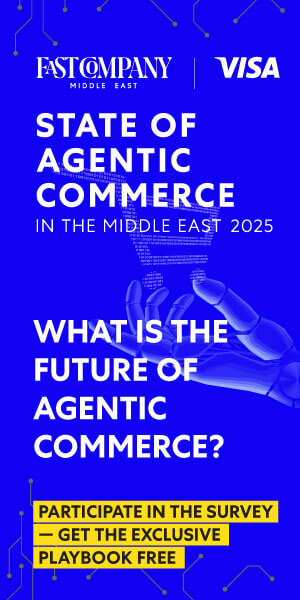- | 8:00 am
This is why your attempts to change your company culture are failing—and how to fix it
Phil Gilbert transformed the way 400,000 IBMers worked. Now he wants to fix your business’s culture.

In 2010, Phil Gilbert was a longtime startup entrepreneur when IBM acquired the software company he ran. The “slower, process-oriented culture” was a struggle for someone who was used to the faster pace of startup life, he writes in his new book, Irrestible Change: A Blueprint for Earning Buy-In and Breakout Success. When IBM tapped him to lead a transformation of the company, it was a daunting task.
Over the next few years, Gilbert guided IBM’s shift toward design-thinking and re-trained thousands of employees to work differently, all without mandating a thing. Today, he sees corporate mandates as pointless: They don’t work, he says. And yet, they’re ubiquitous—take the RTO mandates that companies are enforcing, often to the frustration of their employees. At Paramount, about 600 workers took a voluntary buyout rather than accept the company’s 5-day RTO mandate.
But change is inevitable, whether it’s about remote work or AI integration. So how do companies get employees on board? Gilbert, now a leading culture change expert, spoke with Fast Company about the lessons he learned from his undertaking at IBM and what company leaders should know about getting employee buy-in for their own change initiatives.
We’re in a time when companies are undergoing and implementing lots of changes, from RTO to AI to DEI—all the acronyms. In your book, you talk about the importance of treating change like a product. What do you mean by that?
My predisposition, based on years of experience, is that mandating changes in the workplace is hugely inefficient and hugely ineffective. Cultures drive outcomes. Mandating culture changes to achieve different outcomes doesn’t work.
[At IBM], I had to start thinking, “Okay, if those two things are true, how do I change a culture without mandating it?” And it hit me that this is very much the same problem that any startup faces: bringing a new product to market. You have a new solution to a problem, and nobody knows who you are. It struck me that what I was really doing was constructing a new product for the marketplace that was IBM. I had to make this product so desirable that the teams would choose to adopt it. And in doing so, they would work better together and deliver better outcomes. That was an aha moment of, “Oh, I’ve done this before. I know how to build products, I know how to deliver products.”
If you’re thinking about introducing this [change] as a product, you have to understand that a product is bigger than a technology. A product is much more holistic than just a single tool. We have to name it. We have to put the brand values into it. You have to prove value.
RTO is something so many companies are struggling with. You talk about making change desirable, but what advice do you have for leaders when the change they want to implement is getting pushback?
I’m telling leaders today, “If you are getting pushback from people returning to the office, don’t think it’s on them—it’s on you.”
If you introduce something that people reject after giving it a try, there’s one of two reasons: The first one is that it’s not actually a good idea. The second one, which is more common, is that it’s not a bad idea, but you have not executed it very well.
I’m a big believer in people being at the office, but not for the reason most leaders are saying today. I’ve come across company after company where the CEO will say, “Get back to the office because collaboration is better.” And then when you get to the office, you find out that three-quarters of your team is not even in that location.
Collaboration is actually happening very well over Zoom and Teams and Webex. It’s all the other stuff that makes up a person’s career and a person’s wisdom, the collaborations that are not happening via Zoom, [that we’re missing]. Those are the experiences we should be majoring on in our physical spaces, and they should be apparently valuable.
That’s what irresistible change is all about. It’s about reversing the ownership of noncompliance. In the old model, noncompliance was a failure of the employee: “They don’t get it. I’m going to start looking at the badge readers every day and find out who badged in and who badged out and when they did it.” That’s the old model, and it engenders resentment from day one. The irresistible change model says, “If folks aren’t coming back to the office and staying willingly, why is that? And what can I do to make that environment so valuable to them that they want to be there?”
What surprised you most during the transformation at IBM?
I believed in this thing called the “frozen middle.”
I thought middle management was resistant to change—that had been my experience. So when I designed the program, [I thought], I’ve got to keep the very top engaged—that meant our CEO, her directs, and their directs. And I have to keep the workers at the edge very engaged. They’re the canaries in the coal mine. My assumption was that we would get to the middle over time.
A couple years into the program, [our] research showed that middle managers did not resist change. In fact, they were almost as rabid about change as the people at the edge, the earlier-career people. But middle managers do the hardest job in the business. They’re the translators. They’ve got to translate the high-level strategy and communications to the very senior people. And they’ve got to rationalize the chaos of what’s going on on the ground.
This role of translation is very hard, and we had just made it exponentially harder because we introduced new teams under their purview that were operating in radically different ways from their old teams. We hadn’t given them the tools to manage teams that were using these new practices. Once we acknowledged that and gave them the tools, their ability to manage these teams was greatly expanded. That was a huge accelerant. Had we had that at the beginning, we would have shaved at least a year, if not two, off the program.
If people could take one lesson from your book, what would you want that to be?
The first question I ask every CEO when I’m approached—unfortunately, I’m not approached as often as I’d like to be before the transformation starts; I’m typically approached after it’s failed—is, “Tell me about the teams you’ve put through the program.” And almost always, I hear something like this: “Oh, our best people. We pulled them off their projects. A tiger team.”
Getting those first teams correct is a huge part of winning or losing. These are not cherry-picked employees. These are teams that are funded to do what they’re going to do, whether you transform them or not.
These are not innovation teams in some cool office in San Francisco with bricks and exposed ductwork and VW buses sticking out of the wall. These are teams in your mainstream business—whoever is on them. Virtually everybody gets that wrong.







































